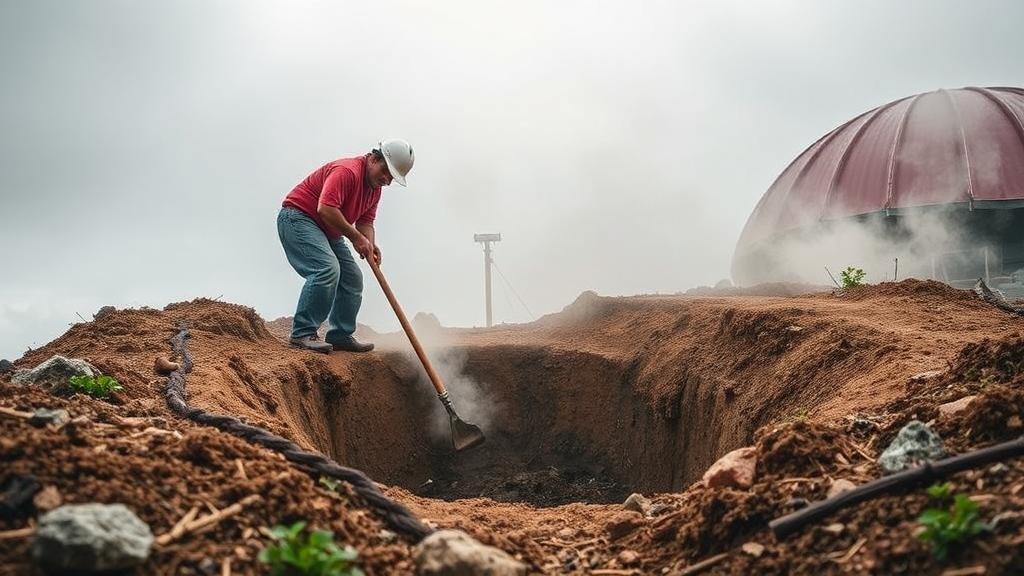How to Safely Excavate in Sites Rumored to Contain Death Traps
How to Safely Excavate in Sites Rumored to Contain Death Traps
Excavating in sites rumored to contain death traps poses significant risks. Whether these are historic battlefields, abandoned mines, or ancient ruins, the potential hazards–both physical and environmental–require meticulous planning and execution. This article delves into the precautions and methodologies that can mitigate risks and ensure a safer excavation process.
Understanding the Risks
The term death trap can refer to a variety of scenarios, including but not limited to structural collapses, toxic chemical exposure, or the presence of unexploded ordnance. Understanding the specific risks associated with a site is crucial before any excavation begins. Here are some common dangers:
- Structural Instability: Excavation near dilapidated structures can lead to collapse. Historical buildings, for instance, may have weakened foundations.
- Hazardous Materials: Sites may contain asbestos, lead, or other toxic substances. Proper identification and handling are essential to avoid exposure.
- Explosive Remnants: In regions with a history of conflict, unexploded ordnance may be present. Specialized teams must be engaged for thorough site assessments.
Useing Safety Protocols
To navigate the complexities of excavating in hazardous environments, establishing a comprehensive safety protocol is non-negotiable. Here are the key steps to follow:
- Site Assessment: Conduct a detailed assessment to identify potential hazards. Involve geologists, historians, and safety experts. Utilizing ground-penetrating radar (GPR) can reveal hidden dangers beneath the surface.
- Protective Gear: Equip all team members with appropriate personal protective equipment (PPE), including helmets, gloves, respiratory gear, and sturdy footwear.
- Emergency Plans: Design a robust emergency response plan that includes evacuation routes, communication strategies, and first aid protocols.
Engaging Specialists and Local Resources
Collaboration with local and specialized experts is paramount. Engaging professionals with experience in hazardous excavations can significantly improve safety outcomes. For example:
- Archaeologists: They can provide insights on the historical context of a site, which can assist in predicting potential dangers.
- Environmental Engineers: Engage these experts for assessing soil quality and potential contamination issues.
- Munitions Experts: In conflict zones, explosive ordnance disposal (EOD) professionals must survey the area before any excavation.
Utilizing Technology
Technology plays a vital role in enhancing safety protocols. The following technologies can be employed:
- Remote Sensing: Techniques such as LiDAR (Light Detection and Ranging) can help map terrain and identify features that may pose risks.
- Drones: UAV (Unmanned Aerial Vehicles) can provide aerial views and assist in monitoring potentially hazardous sites from a safe distance.
- Monitoring Equipment: Dependable soil moisture sensors and structural integrity tools can provide real-time data on the stability of the excavation site.
Case Studies: Successful Excavation Practices
Case studies from various excavations highlight the efficacy of proper safety protocols:
- The L’Aquila Earthquake Recovery: Following the 2009 earthquake in Italy, safety measures implemented during excavations revealed structural instabilities. Using engineered shoring solutions prevented further collapses in historical sites.
- World War II Battlefield Assessments: In Belgium, a collaborative approach was taken for excavating unexploded ordnance, involving the military and local historians. This ensured both the preservation of history and the safety of the excavation teams.
Training and Continuous Improvement
Continuous training is essential for all excavation team members. Regular workshops that simulate potential hazardous situations prepare them for real-life scenarios. Also, integrating feedback from previous projects can lead to improved practices and procedures. Here are actionable steps:
- Conduct Regular Drills: Simulate emergency scenarios to better prepare teams for actual incidents.
- Review and Revise Protocols: Regularly update safety plans based on new research and technologies.
- Promote a Safety Culture: Foster an environment where safety concerns can be reported without penalty, ensuring all voices are heard.
Conclusion
Excavating in sites rumored to contain death traps requires rigorous planning, strong safety protocols, and the integration of technology and expertise. By understanding the specific risks, engaging specialists, and maintaining robust preparedness, excavation projects can minimize dangers and enhance the likelihood of safe operations. Prioritizing safety not only protects workers but also ensures the integrity of the archaeological and historical data being uncovered.



